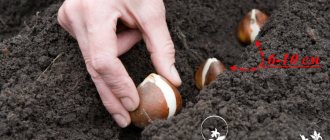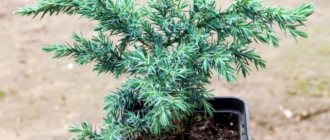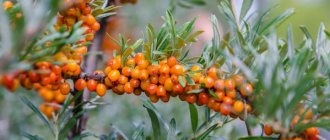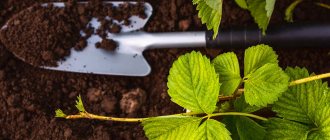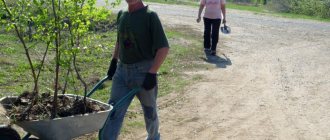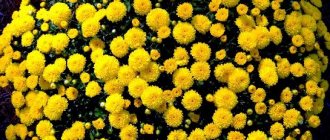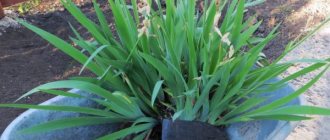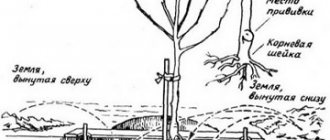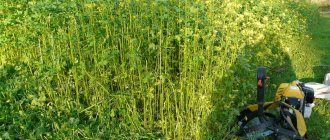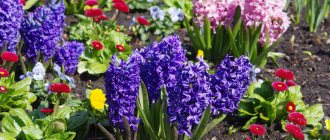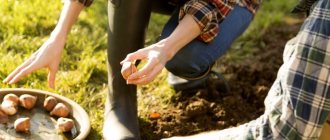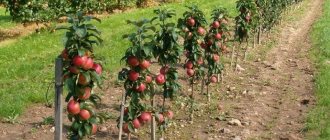Honeysuckle is planted in the fall in all regions of Russia if the desire to acquire a fruit-bearing bush is ripe. In addition to honeysuckle, which bears fruit, there are also ornamental shrubs. Experts advise planting seedlings in the first month of autumn and until mid-October.
Honeysuckle belongs to a genus of shrubs, among which there are climbing species. The plant is able to survive in severe frosts and at the same time produce a large harvest of berries. In addition, it can grow in one place for many years.
Valuable properties of honeysuckle
The main advantage of this plant is that it begins to bear fruit in early summer. In June you can already enjoy delicious berries and replenish your body with vitamins and microelements. Honeysuckle contains a lot of useful substances, thanks to which it is used for the preparation of medicines.
The medicinal properties of the fruit are used for cardiovascular diseases, vitamin deficiency, and to normalize blood pressure. Honeysuckle is recommended for use by people who live in places with radiation contamination. There is a huge list of characteristics of medicinal berries.
- This plant can survive at temperatures around -50°C.
- The root and flower buds can withstand frosts down to -40°C.
- When the plant produces its first shoots, an air temperature of -8°C will not interfere with their development. Therefore, honeysuckle began to be grown boldly not only in the Moscow region and central Russia, but also in the gardens of Siberia.
Important! Climbing bushes prefer warmer climates.
If the plant is given proper care, it can bear fruit for almost 20 years. At the same time, honeysuckle is resistant to various harmful insects.
When should honeysuckle be planted in open ground in the fall?
Honeysuckle can be planted in open ground on the site both in spring and autumn. However, preference is given to autumn planting, which has a number of advantages:
- in the time remaining before the onset of frost, the shrub manages to take root and become stronger;
- the choice of planting material in the autumn is greater, and prices usually decrease;
- Valuable spring time is saved when there is a lot of work.
The only drawback of autumn planting can be considered the existing risk of unexpected and early frosts, from which the seedlings may suffer.
When planting in spring, you need to do it within a very short period of time; the plants have not yet begun to grow.
It is best to plant honeysuckle in the fall.
To fully adapt to a new place of residence, honeysuckle bushes will need about 3-4 weeks left before frost . The specific timing of planting work is determined by the local climate. But since the climatic conditions on the territory of our vast homeland are different, shrubs are planted at different times during the autumn months:
- in the southern regions, where winter comes late, you can plant honeysuckle from the second half of October until mid-November;
- in the middle zone (including Moscow and the Moscow region), where it is significantly colder, it is necessary to complete planting activities earlier - from the second ten days of September to the first ten days of October;
- in northern latitudes (Urals, Siberia) with a harsh climate (risky farming zone), you need to meet it before the first days of October.
How to choose seedlings
Experienced gardeners recommend choosing seedlings in the fall. At this time of year, you can find different varieties of honeysuckle in the markets. The important thing is that the branches still have leaves, thanks to which you can judge the condition of the bush. In addition, the root of a dug up plant practically does not waste energy on rooting.
Rules for purchasing a seedling:
- To plant a high-quality edible type of honeysuckle in the garden, it is best to buy seedlings from gardening organizations or from reputable suppliers. This eliminates the risk of acquiring a mismatched or decorative crop.
- It is worth choosing seedlings that are 2-3 years old, and preferably 3 year old ones.
- In order for pollination to be successful, you should choose 3 varieties of honeysuckle for planting, which will bloom at the same time.
- The trunk and 2-4 branches should be healthy and without flaws, the buds should be intact and dense, the leaves should be clean and well developed.
- The roots must be strong, without rot or signs of disease.
- In the fall, you can plant bare-root seedlings without soil, which is not allowed in the spring. But it is better to buy a bush with a closed root system.
In the regions of Russia you can grow the following varieties of honeysuckle:
- Altair;
- Cinderella;
- Moraine;
- Blue bird;
- Bakchar giant.
- Leningrad giant;
- Blue spindle;
- Long-fruited;
- Nymph;
- Tomsk
Storing seedlings before planting in the ground
How to save seedlings if immediately planting them in a permanent place is impossible? Take into account:
- condition of the bushes;
- time of year (spring or autumn);
- own capabilities.
In early spring, if the buds are still dormant and the weather does not allow planting, the plants are put in the refrigerator. If the plant comes to life, then it is first planted in a prepared container at home, and only then, when favorable days arrive, it is planted outside.
In the fall, seedlings should be planted, and if this is not possible, then buried in the garden. It is not worth planting such honeysuckle in a pot for growing at home in winter, as there is a high risk of losing the plant.
Soil preparation
Before planting seedlings, you should properly prepare the soil, since the plant will grow in this place for more than 25 years:
- First, 5 days before planting, a hole is prepared. Its dimensions will be as follows: diameter - 40 cm, depth 25 - 40 cm.
- Compost or humus - about 12 kg, double superphosphate and potassium salt - 150-200 g each are poured into the hole. Instead of the last two minerals, you can add the following fertilizers: nitrophoska about 400 g or Ammophos - 350 g.
Advice! If you apply fertilizer that does not contain potassium, you can add wood ash: 0.5 kg per bush.
- Mix all the fertilizers added to the hole with soil and water well.
- Cover the well with the mixture and let it brew for 4 days.
Rejuvenating an old honeysuckle bush
If the bush is more than 20 years old, it is pruned from ground level to 30-40 cm. It is better to do this in late autumn or early spring before the buds open. After such pruning, the bush will produce many new shoots, which will delight you with a good harvest of berries next year.
Later, in the 3rd year, 10-15 strong shoots are left on this bush, and the rest are removed at the base at soil level. After this, the plant will produce new shoots from underground. Such a bush will look better and will be easier to harvest. In the spring, the bush is sanitized by removing branches broken by snow.
Watch this video on how to properly prune and shape a honeysuckle bush.
Dear friends, now you know how to properly plant, care for and prune a relatively new crop like honeysuckle. Use these tips and may you have a good harvest of these berries.
Have a good harvest!
Landing
It is important to know when and how to plant honeysuckle, since the proper development of the plant depends on this. Before planting, the bush should be checked to ensure there are no bad branches on it. They need to be cut off, and long root shoots are cut to 30 cm.
Landing sequence:
- The best age for seedlings is 3 years. During this period, their root system develops well.
- You need to plant up to 4 types of honeysuckle at the same time to achieve full pollination.
- We distribute the seedlings at a distance of 1.5 m from each other.
- Place the root of the plant in the hole so that its root collar is level with the site. You can also lower it 2 cm below the ground.
- We fill the hole with the seedling with soil and pour in a bucket of water.
- The top part of the soil must be mulched. For this, humus or peat is used.
Important! When planting a large number of seedlings, it is necessary to maintain a distance of approximately 1 m between them, and 2.5 m between rows.
Typical mistakes when planting honeysuckle
Inexperienced gardeners often make mistakes when planting honeysuckle on their site:
- Take several identical bushes of the same variety. For successful pollination you need at least 3, and preferably 5-6 different varieties.
- Too much fertilizer is applied (nitrogen-containing compounds should not be applied in the fall), causing unnecessary growth of green mass.
- The roots are not straightened (this slows down the rooting process).
- Planted too high when the root collar is above ground level (fraught with the death of the seedling). It is better to deepen the honeysuckle a little (by 3–4 cm), because over time young shoots may grow from the buried branches.
In order for edible honeysuckle to actively bear fruit, it is necessary to plant several different varieties nearby
Care after landing
If you plant a plant and care for it, following all the rules, fruits may appear as early as next year. After planting honeysuckle, you need to promptly collect weeds, which deprive weak seedlings of moisture and nutrition. Also, it is necessary to ensure that the soil does not dry out.
In order for the plant to take root, you need to know the timing of planting honeysuckle in the fall. Seedlings should be planted before frost, then they will take root and survive the winter well. You can add mulch or pine needles under the tree in a layer of 10-15 cm. If the winter is snowy, then it’s good to pile more snow under the bush. In the spring, when the sun dries the soil, you need to loosen it around the seedling.
If mulch was not used, the plant must be hilled high for 3 years in a row with the arrival of spring. In hot summers, the bush requires abundant watering. If watering is not sufficient, the berries will be bitter.
Watch the video! Honeysuckle. Planting and care
If the summer is not hot, honeysuckle can be watered about 4 times per season. It will be enough to pour 10 liters of water under each bush.
At the same time, do not forget to remove weeds and loosen the soil around the flower. Due to the shallow location of the root system, it is possible to loosen the soil only 8 cm deep.
Honeysuckle, according to the rules of care in open ground , is not fed for two years. In the third year, they begin to introduce organic fertilizers and repeat this procedure annually. Every autumn, the soil is fertilized per 1 sq.m with the following composition:
- compost – 5 kg;
- ash – 0.1 kg;
- double superphosphate - 40 g.
With the arrival of spring, the plant is fed with saltpeter: 15 g per 1 sq. m.
Urea (1 tbsp) is diluted in a container with a volume of 10 liters and the soil under the bush is soaked with this solution.
After harvesting the fruits, you should fertilize the plant again with a solution of manure. To prepare it you need to take water - 4 parts and manure - 1 part.
Autumn or spring planting: what to choose?
In the wild, honeysuckle grows in Siberia and the Far East. It was from such samples that breeders developed edible varieties of this shrub. The plant is not afraid of even the most severe frosts, but reacts poorly to heat and drought. A sudden thaw in winter can destroy a shrub, since immediately after the snow melts, the plant's buds awaken and the growing season begins. Therefore, it is important to allow honeysuckle to get stronger after planting in order to survive the winter safely.
Pros of spring planting:
- the ability to monitor the development of the plant;
- rapid growth of foliage;
- a large number of fruit buds.
In spring, the seedling is placed in open ground from mid-March to the end of April. It is important not to miss the moment when planting is allowed, because if you do it too early or late (during the period of bud swelling), then it will not take root. This is the main disadvantage of spring planting. It is very difficult to accurately calculate the timing, so the young plant will get sick and may die.
Benefits of autumn planting:
- high survival rate;
- quick and comfortable rooting;
- hardening (stratification) of seedlings.
This method has no disadvantages, so it is best to plant honeysuckle in the fall. This will allow the young plant to grow stronger and begin to grow green mass faster in the spring.
Pruning in autumn
After planting, honeysuckle branches do not need to be pruned for 2 years. Next, you need to act according to the circumstances. There are cases when a plant undergoes cultivation in the 8th year of life. The best time for pruning is autumn.
All dry and damaged branches are removed from the bush. For better air circulation, it is recommended to prune inside the bush. It is important to remember that berries mainly grow on annual branches. They should not be cut off, but the tips of new shoots should be trimmed.
Important! The old bush must be cleared of perennial branches, and it is better to leave the young shoots.
Any honeysuckle variety develops slowly for the first 3-4 years. In the 4th year of life, many bushes can reach about 70-80 cm in height with a crown span of 1 meter. If the planting of honeysuckle was carried out according to all the rules, then from 4-5 years it begins to bear fruit in full force.
Watch the video! Pruning honeysuckle
Autumn care for honeysuckle
Honeysuckle bushes must be watered regularly, the soil must be mulched, and timely fertilizing and pruning must be carried out.
Autumn replanting of the crop is carried out from September to November. To form young shoots, the bush is pruned. The work is done carefully - honeysuckle grows slowly and improper care will lead to a long recovery of the plant.
Sanitary removal of broken shoots and dried branches is carried out annually.
Autumn care for shrubs includes enriching the soil with mineral and organic compounds:
- superphosphate;
- nitroammophoska;
- compost;
- wood ash.
Watering rules
The bushes are irrigated abundantly immediately after planting. 10 liters of water are poured onto 1 plant. The jet is directed into a recess located near the trunk circle.
If the shrubs are located near groundwater, reduce watering, because the plant’s root system rots. You should not add fertilizers containing nitrogen to the water - they often cause the death of honeysuckle in frosty and windy weather.
We recommend that you familiarize yourself with Poisonous honeysuckle
Features loosening
After watering the bushes, mulch the soil located near the trunk. For this use:
- peat;
- sawdust;
- nut shells.
The mulch is poured in a layer of no more than 10 cm. Loosening affects only the top layer of soil - the roots of the plant are located close to the surface of the soil. A layer of peat or sawdust retains moisture and prevents the growth of weeds. Well-rotted manure mixtures containing leaves, sawdust or grass activate the activity of beneficial bacteria.
Under the mulch, the soil becomes loose, fertile and moist. Earthworms breed in the soil, converting organic matter from the surface into humus, which contains a lot of humus. In this case, the nutrition of honeysuckle bushes improves.
The soil must be mulched annually in early November, before the onset of the first frost.
To avoid bark rot, care should be taken when placing peat or sawdust under the honeysuckle. The covering should not cover the lower part of the bush. After planting new plants, mulching the soil helps retain moisture and protects the root system from exposure to low temperatures.
Manure is also used as a surface layer; it is not added to the planting hole. Honeysuckle bushes bear fruit abundantly after agrotechnical measures.
Fertilizer
For the full development and abundant flowering of bushes, it is necessary to provide the soil with high-quality nutrient mixtures. Organic fertilizers have a positive effect on soil fertility.
Honeysuckle is watered with slurry diluted with water in a ratio of 1:2, or bird droppings are used. Mineral mixtures do not affect the composition of the soil, but accelerate the process of formation of leaves and shoots.
Phosphorus supplements promote rapid root growth, and potassium compounds protect honeysuckle from fungal attack. In many cases, the gardener satisfies the needs of the plant through the use of complex preparations.
For full growth, honeysuckle bushes need the following elements:
- boron;
- iron;
- zinc;
- copper;
- manganese, etc.
They are added in minimal quantities during the period of foliar feeding. The work is carried out on cloudy days, when the soil becomes wet and loose.
We recommend that you read: Using barberry berries
Pruning rules
After planting, honeysuckle bushes are shortened only if the integrity of the root system has been damaged. Sanitary pruning is carried out for plants older than 6-7 years. Remove dried or diseased shoots.
It is necessary to trim the branches of the lower tier - they are on the surface of the ground and interfere with the owner’s care for the honeysuckle. It should be remembered that in some varieties it is not recommended to remove the tips of the shoots - damage to a large number of buds reduces the yield of the crop.
By thinning out the middle of the bush, they allow the sun's rays to reach the lower part of the trunk. Plants older than 7 years are pruned in late autumn. The skeletal branches at the base should not be eliminated - the crown grows due to dormant buds located on aging shoots.
Pest and disease control
Plants are resistant to parasites, but some cultivated varieties suffer from infectious diseases. Pests destroy flowers and fruits and have a negative impact on shoot growth.
Aphids damage young branches. The leaves turn yellow, the edges curl at the bottom. The larvae lay eggs on the apical shoots. After they dry, the appearance of the bush changes.
Spruce aphids destroy leaves on blue, Tartary and common honeysuckle. The insect is covered with down and has an intermediate host, the common spruce. Aphids carry dangerous infectious pathogens.
Proper care of honeysuckle bushes prevents the development of viral diseases. Plants are treated with Actellik and Confidor.
To kill aphids, infusions of tobacco, pepper or garlic are used. At the beginning of autumn, the leaves of shrubs may darken and curl; the Rincaphytoptus mite lives on their surface. The insect loves moisture and reproduces quickly in favorable conditions. The spider pest sucks the juice from young shoots, causing the leaves to dry out and fall off.
The following drugs are used to kill parasites:
- Fitoverm;
- Boverin;
- Omite;
- Mauritius.
To combat scale insect larvae, bushes are sprayed with Aktara or Karbofos. The drug Decis is used to destroy the striped sawfly, which gnaws holes on leaf blades. To eliminate parasites, a 0.2% solution of Chlorophos or an infusion of tomato leaves is also used.
